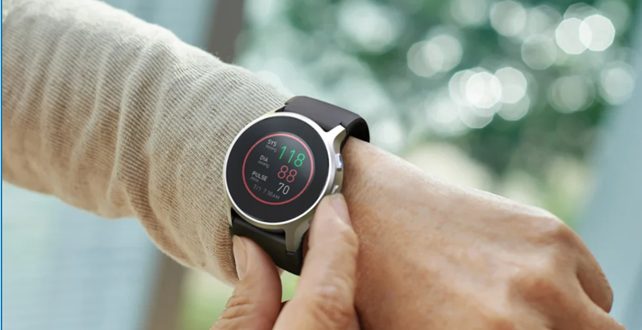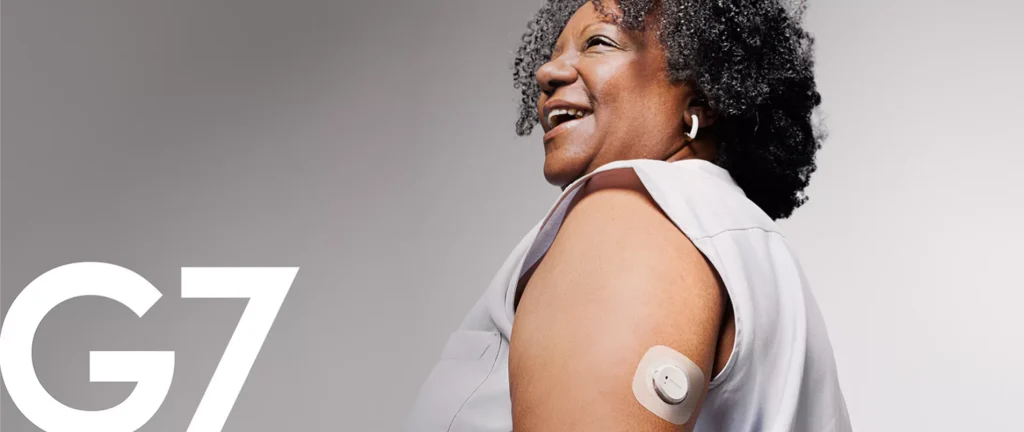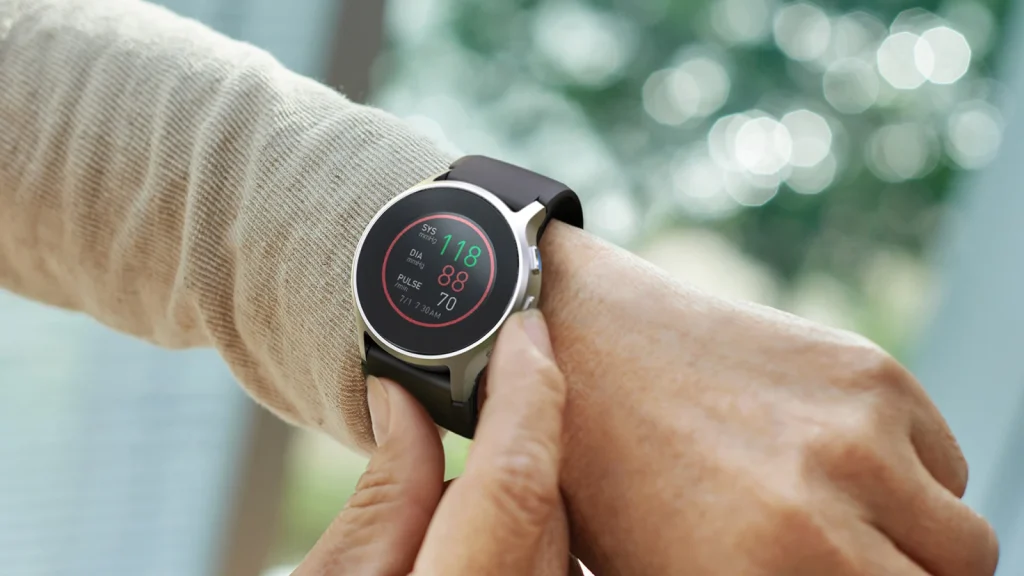
How Wearables are Revolutionizing Elderly Chronic Disease Care

Wearable health devices have transformed from once simplistically viewed as ”the toys of young people.” These small devices contain multiple functionalities from blood pressure measurement to the management of diabetes, thus making health management more convenient for the aged and introducing novel solutions to the medical system.
There has been quite a sharp rise in recent years in the international trend toward population aging. Statistics from the World Health Organization point to how the population aged 60 and over will grow sharply in coming decades, thus consequently implying that cases of patients with chronic diseases, e.g., cardiovascular disease and diabetes, will increasingly rise.
Traditional disease management of chronic conditions relies upon frequent visits to hospitals and self-management by the patient; yet this approach all too often lacks continuity and tailoring. Wearable sensors—with example smartwatches, glucose monitors, and blood pressure monitors that are wearable—are opening new ways to solve this problem.
What Gives Wearable Devices Value?
In terms of traditional instruments, the significance of wearable sensors is that they enable constant monitoring and distant transmission.
- There is no necessity for patients to wait until their next appointment to receive health feedback.
- The specialists can monitor important metrics in real time via cloud platform.
- Relatives are also able to get current updates on how the ageing relative is coping, particularly in situations where they stay alone.
For example, Apple Watch’s electrocardiogram feature enables it to diagnose abnormal heart rhythms like atrial fibrillation when it’s worn regularly, with a detection specificity of between 98.3%. Abbott’s FreeStyle Libre 3 enables diabetic patients to track their blood sugar trends without having to resort to frequent blood sampling through finger prick. On the other hand, Omron’s HeartGuide incorporates the conventional blood pressure monitor into a wristband and enables one to monitor blood pressure all day.

The clinical findings are quite encouraging: A systematic research tracking 38,312 diabetic patients over 65 years observed that after using continuous glucose monitoring devices for 2 years, the rate of acute hospitalization linked to diabetes decreased by 40%. This translates to out of every 100 aged patients using the device, they managed to prevent hospitalization from improper blood sugar control.
The Practical Matters
Though these devices have enjoyed positive results, a gap continues to exist between ideal and real conditions:
- More devices are constructed for one disease or another and not streamlined across several diseases.
- The devices usually incorporate smartphone applications, but most aged individuals are not familiar with operations related to them.
- Frequent charging, sensor replacements, or software updates might permanently deter aged users from using it in full.
- The US FDA once recalled the blood glucose monitoring system Dexcom G7 owing to software flaws, giving a reminder about the risks posed by over-reliance on one device.
- Cost for equipment as well as consumables may cause financial dilemmas for families for the elderly.
We have identified an interesting finding: usually the elderly population who most need health monitoring is often the one possessing relatively less digital literacy. Such ”use paradox” is the fundamental conundrum already presented by digital health development.
Future Direction:
To be successful, wearable devices must have several enhancements:
- Technology: Support cross-device and cross-platform interoperability and offer integrated health data.
- Design: The design aims to extend battery life, reduce weight, and simplify operation, thereby facilitating daily use for the elderly.
- Service: With assistance from community nurses or family caretakers, assist aged individuals maintain their equipment.
- Policy: Offer evidence-based equipment through the medical insurance coverage to reduce the financial burden.
In view of the findings, an improvement framework in four dimensions must be built: technical interoperability, design for older persons, community support for services, and institutional policy assurances.
Wearable technology is driving forward chronic disease care for the elderly by allowing them to incorporate health data into everyday life outside of hospitals. The critical factor here is not how advanced technology is, but how it can help make lives simpler for the older generations. The coming years if technology, design, services, and policy are aligned will see these factors become strong tools in healthy aging.
Thesis in Theseus: https://urn.fi/URN:NBN:fi:amk-2025100325527
Reference:
Apple Inc. (2025c, May 19). Take an ECG with the ECG app on Apple Watch. Apple Support. https://support.apple.com/en-us/120278
Dexcom Inc. (n.d.). Dexcom G7 CGM sensor for easier diabetes management. Dexcom US. Retrieved August 31, 2025, from https://www.dexcom.com/en-us/g7-overview
FDA (U.S. Food and Drug Administration). (2025, June 4). Class 2 device recall dexcom G7 vontinuous glucose monitoring (CGM) system. FDA. https://www.accessdata.fda.gov/scripts/cdrh/cfdocs/cfres/res.cfm?id=213398
Guerci, B., Levrat-Guillen, F., Vicaut, E., De Pouvourville, G., Detournay, B., Emery, C., & Riveline, J.-P. (2023). Reduced acute diabetes events after FreeStyle Libre system initiation in people 65 years or older with type 2 diabetes on intensive tnsulin therapy in France. Diabetes Technology & Therapeutics, 25(6), 384–394. https://doi.org/10.1089/dia.2023.0034
Jafleh, E. A., Alnaqbi, F. A., Almaeeni, H. A., Faqeeh, S., Alzaabi, M. A., Zaman, K. A., Jafleh, E. A., Alnaqbi, F., Almaeeni, H., Faqeeh, S., Alzaabi, M., & Zaman, K. A. (2024). The Role of Wearable Devices in Chronic Disease Monitoring and Patient Care: A Comprehensive Review. Cureus, 16. https://doi.org/10.7759/cureus.68921
Karthika, M., Abraham, J., Kodali, P. B., & Mathews, E. (2023). Emerging trends of chronic diseases and their care among older persons globally. In Handbook of Aging, Health and Public Policy (pp. 1–24). Springer, Singapore. https://doi.org/10.1007/978-981-16-1914-4_198-1
Lu, L., Zhang, J., Xie, Y., Gao, F., Xu, S., Wu, X., & Zhewei Ye. (2020). Wearable health devices in Health Care: Narrative systematic review. JMIR mHealth and uHealth, 8(11), e18907. https://doi.org/10.2196/18907
Nguyen, A., & White, J. R. (2022). FreeStyle Libre 3. Clinical Diabetes, 41(1), 127–128. https://doi.org/10.2337/cd22-0102
OMRON Healthcare. (2025). HeartGuide. OMRON Healthcare EMEA. https://www.omron-healthcare.com/products/heartguide
WHO (World Health Organization). (2024, October 1). Ageing and health. WHO. https://www.who.int/news-room/fact-sheets/detail/ageing-and-health